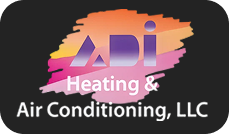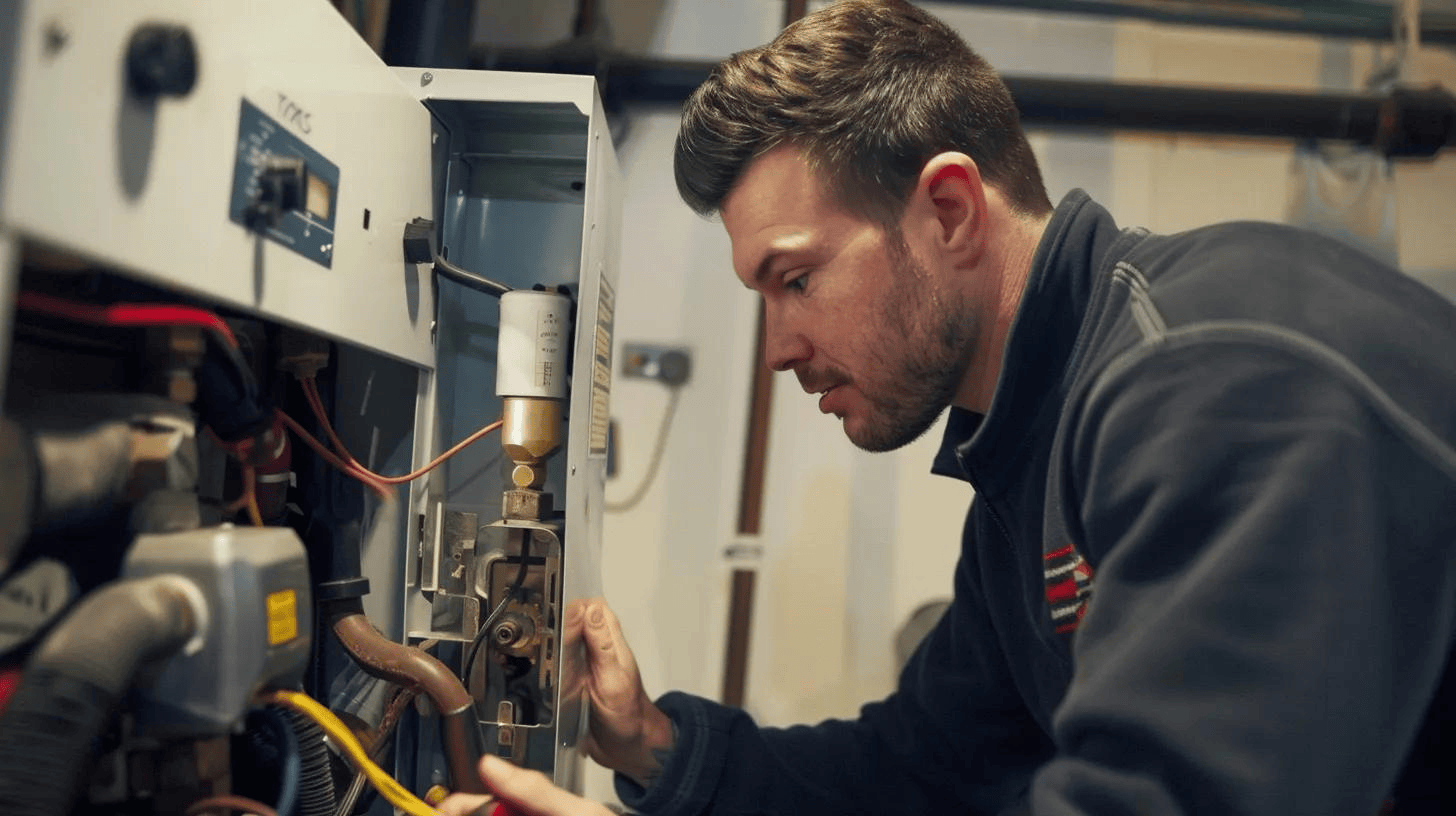Seasonal Home Prep Checklist
It’s the coldest night of the year in Montgomery County. The wind is howling, the temperature has plunged into the teens, and your family is finally settled in for the night. Then it happens. The quiet hum of the furnace stops. A few minutes later, you notice the chill creeping into the rooms. The thermostat confirms your fear: the heat is out.
This scenario is more than just an inconvenience; it's a core anxiety for homeowners. While many online guides offer generic furnace maintenance checklists, they often miss the real question on your mind: How do I prevent this nightmare from happening, and what's my plan if it does?
This is not another checklist. This is your peace of mind plan. We’ll move beyond simple tips and give you a complete strategy for proactive, year-round preparedness. We’ll show you how specific maintenance tasks directly prevent the most common and dreaded system failures, empowering you to protect your home and family.
The Winter Survival Guide: Connecting Maintenance to Prevention
A furnace doesn't just decide to fail randomly. Breakdowns are almost always the result of a specific part failing due to a lack of maintenance. Instead of just listing tasks, let's connect the dots between the work you do and the emergency you prevent.
Task: Inspect and Clean the Flame Sensor
- What it is: A thin, metallic rod in your furnace that confirms a flame is present when the gas valve opens. If it's dirty, it can't detect the flame and will shut the system down as a safety precaution.
- What it Prevents: The most common cause of a "no heat" emergency. You’ll hear the furnace click on, but it will shut down seconds later without ever producing heat. A simple cleaning with steel wool can prevent a frantic, middle-of-the-night service call.
Task: Check and Clear the Condensate Line
- What it is: High-efficiency furnaces produce condensation (water) that drains away through a plastic pipe.
- What it Prevents: A system shutdown from a clogged or frozen line. If this line gets blocked with debris or freezes during a deep cold snap, a safety switch will shut your furnace off to prevent water from backing up and damaging the system or your home. Ensuring it's clear before winter is critical.
Task: Test Your Thermostat Batteries
- What it is: A surprisingly simple but often overlooked step.
- What it Prevents: A "phantom" breakdown. Before you assume the worst, changing the batteries in your thermostat can often solve the problem instantly, saving you the cost and stress of an unnecessary emergency call for a furnace repair.
Recognizing the Check Engine Lights of Your HVAC System
Your system will almost always give you warning signs before a catastrophic failure. Learning to interpret these signals is a key part of proactive ownership.
- Loud Banging or Popping: This often happens when furnace burners are dirty. Gas builds up before igniting, causing a small, alarming explosion. This puts unnecessary stress on your heat exchanger and is a clear sign it needs professional cleaning.
- High-Pitched Squealing: This typically points to a problem with the blower motor, either due to a worn-out belt or failing motor bearings. Ignoring this sound can lead to a complete motor failure.
- Scraping or Grinding: This is a serious red flag. It often indicates a major issue with the blower wheel or motor bearings. Turn the system off immediately and call a professional to prevent more extensive and costly damage.
What to Do When the Worst Happens: Your HVAC Emergency Plan
Even with the best preparation, emergencies can happen. Having a clear plan transforms panic into focused action. Many online resources are unreliable-we've seen major manufacturer sites with broken links to their own maintenance guides. Keep this plan somewhere accessible.
Step 1: Don't Panic. Run the Basic Checklist.
Before you call for service, check these three things. It could save you time and money.
- Check the Thermostat: Is it set to "Heat"? Are the batteries fresh?
- Check the Breaker: Go to your electrical panel. Has the breaker for the furnace tripped?
- Check the Filter: A severely clogged air filter can restrict airflow and cause the system to overheat and shut down.
Step 2: Have an Emergency Kit Ready.
If the heat is truly out, your priority is staying warm and safe. Have a box with:
- Warm blankets and layered clothing for everyone in the family.
- One or two reliable electric space heaters. Never use a gas stove or oven to heat your home due to the risk of carbon monoxide poisoning.
- A reliable emergency contact list, with your trusted HVAC provider's number at the top.
Step 3: Call for Professional Help.
Once you've run the basic checks and secured your family's immediate warmth, it's time to call a certified technician. Explain the symptoms you've observed (e.g., "I heard a loud banging noise, and now it won't turn on"). This helps the technician diagnose the problem faster.
Beyond Winter: Smart Off-Season Preparedness
True peace of mind comes from year-round diligence. What you do in the "off-season" is just as important as your fall tune-up.
Spring AC Readiness
As the Maryland weather warms up, your focus shifts. Preparing your AC prevents a breakdown during the first sweltering summer heatwave.
- Clear the Area: Remove any covers, leaves, and debris from your outdoor condenser unit to ensure proper airflow.
- Check the Condensate Drain: Just like your furnace, your AC has a drain line that can get clogged. Ensure it's clear to prevent water damage indoors.
- Schedule a Tune-Up: This is the best time to schedule professional air conditioning services. A technician can check refrigerant levels, clean the coils, and ensure your system is ready for the summer load.
Know Your Limits: A Clear Guide to DIY vs. Professional HVAC Service
Understanding what you can handle and when to call an expert is crucial for your safety and your system's health.
Safe for a Confident Homeowner (DIY)
- Changing the air filter (monthly or quarterly)
- Testing thermostat batteries
- Clearing debris from around the outdoor unit
- Visually inspecting drain lines for clogs
Call a Professional Immediately
- Any task involving gas lines or electrical components
- Cleaning internal components like burners or the blower motor
- Addressing strange noises like squealing or grinding
- Adding refrigerant to an air conditioner (this often indicates a leak that needs professional repair)
A professional tune-up is one of the smartest investments you can make. While research from sources like This Old House shows a typical professional cleaning can cost between $60 and $150, the value it provides in preventing a multi-thousand dollar emergency replacement is immense. A comprehensive HVAC maintenance plan bundles these services and provides priority support, offering the ultimate level of security.
Frequently Asked Questions
Q: Is an annual professional tune-up really worth the cost?
A: Absolutely. Think of it like an oil change for your car. A small, predictable investment prevents catastrophic failure, improves energy efficiency (saving you money on utility bills), and extends the lifespan of your equipment. It's not a cost; it's a high-return investment in reliability.
Q: My furnace is only a few years old. Do I still need to get it checked?
A: Yes. Most manufacturer warranties require proof of annual maintenance to remain valid. A professional check-up ensures your system is running according to spec and protects your investment if a warranty claim is ever needed.
Q: How often should I really change my air filter?
A: It depends on your home. The standard recommendation is every 90 days, but if you have pets, smokers, or family members with allergies, you should check it every 30 days. A clean filter is the single easiest and most effective thing you can do for your system's health and your home's air quality.
Your Final Step to Total Preparedness
You now have a complete framework for preventing HVAC emergencies. You know how to spot warning signs, what to do in a crisis, and how specific maintenance tasks protect your system.
The final step is partnering with a trusted expert to handle the critical inspections and cleanings that ensure year-round reliability. Since 1998, ADI Heating and Air Conditioning has been the trusted partner for homeowners across the D.C. area, providing the expertise and dependability that turns anxiety into confidence.
Don't wait for the first cold snap. Take control of your home's comfort and safety today. Schedule your professional maintenance check with ADI and make this the year you're fully prepared.






.png)
